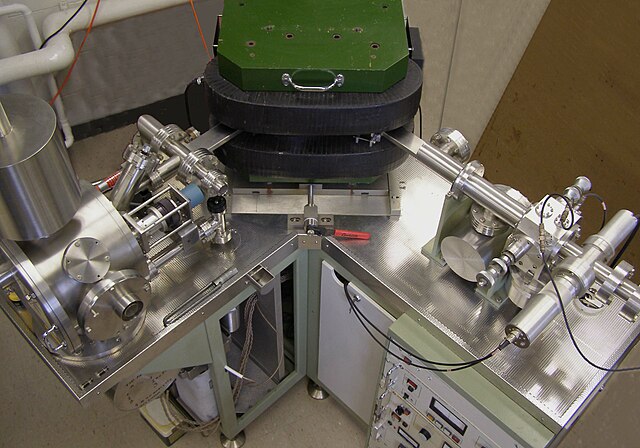Top Qs
Timeline
Chat
Perspective
Isotope fractionation
Processes for the separation of isotopes From Wikipedia, the free encyclopedia
Remove ads
Isotope fractionation describes fractionation processes that affect the relative abundance of isotopes, a phenomena that occurs (and so advantage is taken of it) in the study geochemistry,[1] biochemistry,[2] food science,[3] and other fields. Normally, the focus is on stable isotopes of the same element. Isotopic fractionation can be measured by isotope analysis, using isotope-ratio mass spectrometry,[1] nuclear magnetic resonance methods (specialised techniques,[2][3]) cavity ring-down spectroscopy,[not verified in body] etc., to measure ratios of isotopes, important tools to understand geochemical and biological systems, past and present.[not verified in body] For example, biochemical processes cause changes in ratios of stable carbon isotopes incorporated into biomass.[not verified in body]
This article is missing information about other fields where isotopic fractionation is observed, e.g., metabolism of natural products, and all methods of analysis thereof, including MS and NMR, all being given balanced treatment. (March 2025) |

Remove ads
Definition
Stable isotopes partitioning between two substances A and B can be expressed by the use of the isotopic fractionation factor (alpha):
- αA-B = RA/RB
where R is the ratio of the heavy to light isotope (e.g., 2H/1H or 18O/16O). Values for alpha tend to be very close to 1.[1][4]
Types
This section needs expansion with: a source-derived verification and explanation of the current appearing technique names, which is generally, alone, just jargon to even informed readers. You can help by adding to it. (March 2025) |
There are four types of isotope fractionation (of which the first two are normally most important): equilibrium fractionation, kinetic fractionation, mass-independent fractionation (or non-mass-dependent fractionation), and transient kinetic isotope fractionation.[citation needed]
Remove ads
Example
Isotope fractionation occurs during a phase transition, when the ratio of light to heavy isotopes in the involved molecules changes. As Carol Kendall of the USGS states in an information page for the USGS Isotope Tracers Project, "water vapor condenses (an equilibrium process), the heavier water isotopes (18O and 2H) become enriched in the liquid phase while the lighter isotopes (16O and 1H) tend toward the vapor phase".[1]
See also
References
Further reading
Wikiwand - on
Seamless Wikipedia browsing. On steroids.
Remove ads
